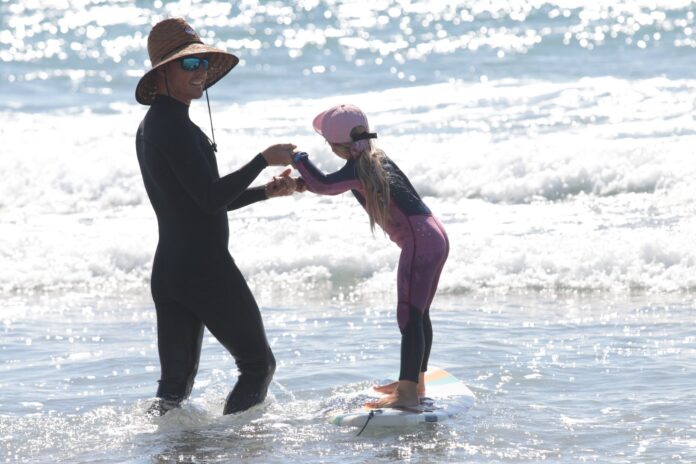From the ancient Polynesians to modern professional surfers, the primal allure of gliding along a wave of moving water has been a cherished tradition for centuries. But have you ever thought about the profound implications of this sport on our younger generation?
We all know that most popular surf spots are home to a crew of grommets (young surfers) who embrace the lifestyle and master the skill of surfing, often quite competitively. They are likely to receive some (mostly) good-natured bullying from older surfers as they develop and grow until they’re eventually accepted as equals in the lineup. These surf kids are generally healthy, “dialed in” to the patterns of nature, and obsessive about their pastime. They have something that gives life meaning.
They have something that gives life meaning.
That’s what this article is all about. Surfing offers far more than just the thrill of catching waves and hanging at the beach with your crew — it provides a wealth of proven physical, mental, and emotional benefits. It also gives young people a purpose beyond screens and peer pressure.
Read on to see why surfing, both as a lifestyle and intervention, can help young people cope with the demands of our modern world while also bringing joy and rhythm to life.
Children are Suffering
Our contemporary era, with its deluge of technological distractions and shifts in lifestyle, has presented a unique set of physical and mental challenges for children and young people. Physically, a surge in sedentary behavior often fueled by screen time has contributed to a worrying escalation in childhood obesity (source). Concurrently, children are increasingly disconnected from nature, missing out on the holistic health benefits associated with outdoor activities (source). From the mental health perspective, they face a rising tide of stressors, including academic pressures, social media-induced anxieties, and, in recent years, the psychological impacts of the COVID-19 pandemic.

Additionally, ubiquitous digital distractions fragment attention spans, undermining their capacity for deep focus and creative thought. These challenges underscore the urgency to implement multidimensional solutions, such as the transformative benefits of surfing, to nurture our younger generation’s physical and mental wellbeing.
Surfing’s Physical Impact
A child’s body is a symphony of potential. The early years are crucial for establishing a foundation of physical fitness, coordination, balance, and strength. Surfing, as it turns out, offers a unique way to develop these skills, striking an unusual balance between aerobic and anaerobic exercise.
Surfing is not simply about riding a wave. Paddling out to the break demands stamina, strengthening the cardiovascular system. Meanwhile, the act of standing up on the board (known as “pop-up”) cultivates anaerobic fitness, agility, and muscle strength, particularly in the core and upper body. Additionally, the balance required to stay upright on a moving board fine-tunes proprioceptive skills.
But the physical impact of surfing goes beyond building robustness. Engaging with the sea, an unpredictable and ever-changing natural environment, imparts a deeper sense of environmental awareness, a connection to nature that is often neglected in our digital age.
Flow State and The Unfragmented Mind
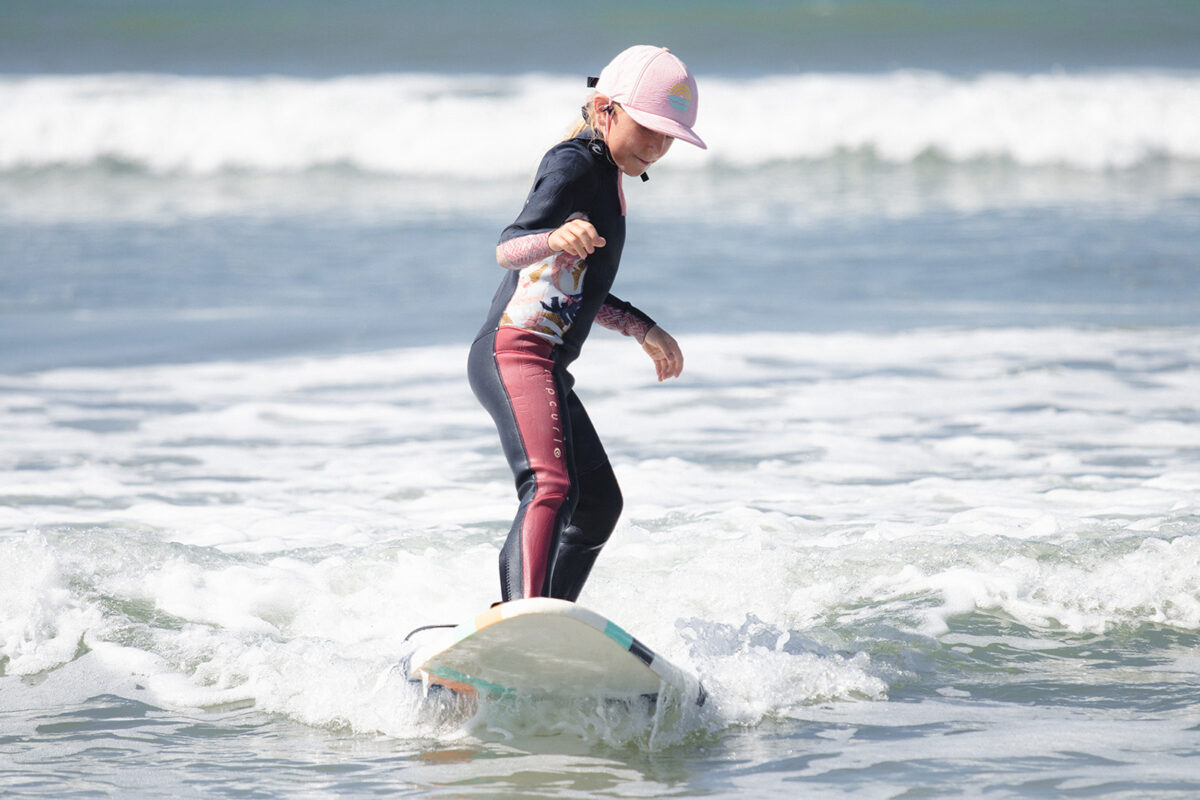
In our hyper-connected world, children are often bombarded with a whirlwind of distractions, leading to fragmented attention and diminished capacity for deep focus. Surfing, with its innate demand for unwavering attention, offers an antidote.
Enter the concept of “flow“—a state of intense focus, characterized by complete absorption in the task at hand, a sense of control, and the temporary suspension of self-consciousness. The art of riding a wave personifies this mental state, forcing the surfer to engage fully with the present moment.
Out of water, I am nothing.
Duke Kahanamoku
As children ride waves, they immerse themselves in the flow state, thereby developing resilience against the disruptive torrents of modern distraction. Additionally, this can bolster their ability to engage in other complex cognitive tasks, enhancing academic performance and problem-solving skills.
Surfing As Therapy
While surfing’s physical benefits are easily seen, the mental health benefits, though no less significant, are a bit more subtle. In recent years, the therapeutic potential of surfing has been explored through surf therapy programs. We at Surfd.com worked on a documentary called Waves of Freedom, which documented the transformation of young men who engaged in a surf therapy program after being in the justice system in New Zealand.
Anecdotal reports and research studies suggest that engagement with the ocean through surfing can reduce symptoms of mental health disorders such as depression, anxiety, and PTSD. The very act of facing a wave, riding it, and recovering from wipeouts can serve as a profound metaphor for resilience, teaching children to navigate life’s challenges with grace and tenacity. These life lessons spill over from the ocean to the shore, shaping their worldview and resilience in other life areas.
We are tied to the ocean. And when we go back to the sea, whether it is to sail or to watch, we are going back from whence we came.
John F. Kennedy
Moreover, surfing provides a unique form of mindfulness practice, where the rhythmic motion of the ocean and the immersive focus required help children develop a healthier mental space. This natural mindfulness can help them cope with stress, enhance self-esteem, and promote positive emotional health.
Surfing’s Path to Self-discovery
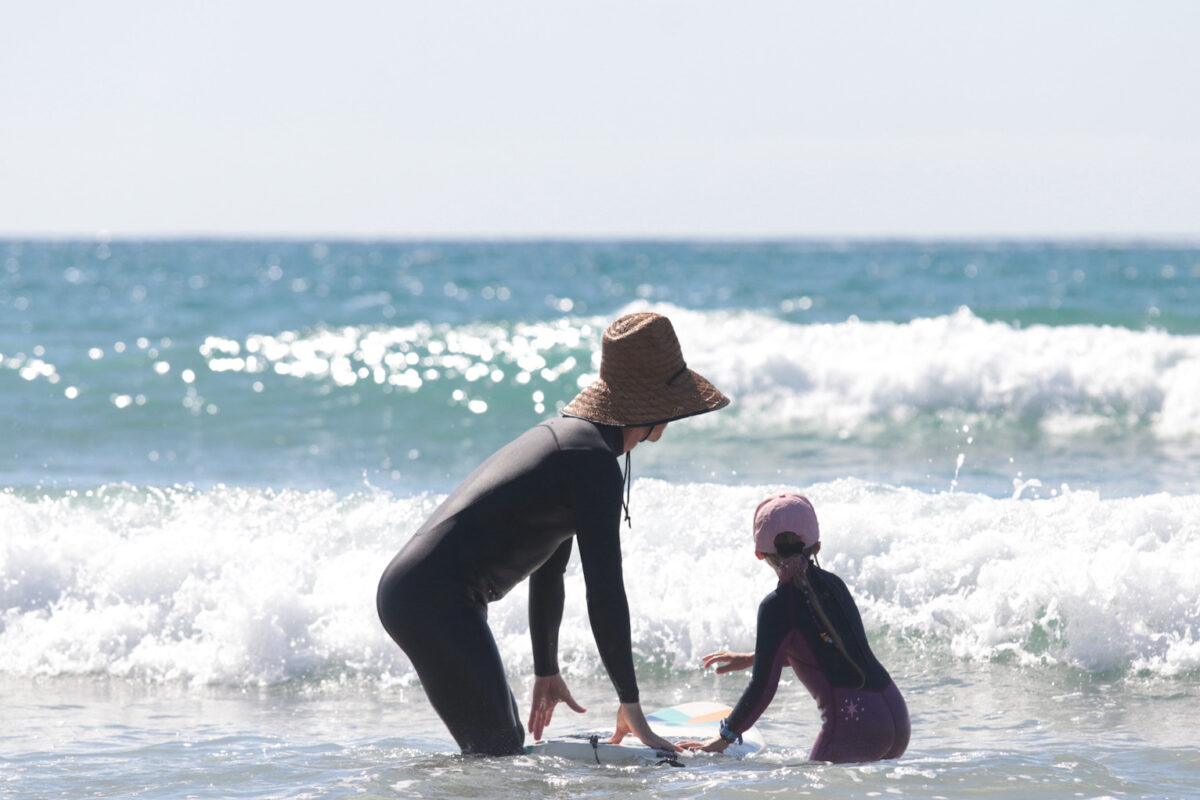
Beyond the physical strength and mental resilience surfing cultivates, it is in the exhilarating dance between surfer and wave where children can discover a powerful sense of self-efficacy. The mastery of surfing —the art of reading the ocean’s patterns, adapting to its moods, and expressing oneself on a fleeting wall of water— encourages a deep sense of accomplishment and self-confidence.
Learning both situation awareness and agility underpin a growth mindset and the capacity to be flexible when encountering challenges on land.
The biggest sin in the world would be if I lost my love for the ocean.
Laird Hamilton
Inherent to this self-discovery is also a humble respect for the forces larger than oneself. The ocean, in its grandeur and might, teaches invaluable lessons about humility and respect for nature. This environmental awareness fostered from a young age could drive the next generation towards more sustainable practices and a better understanding of their role in the world’s ecosystem.
Being a Grom
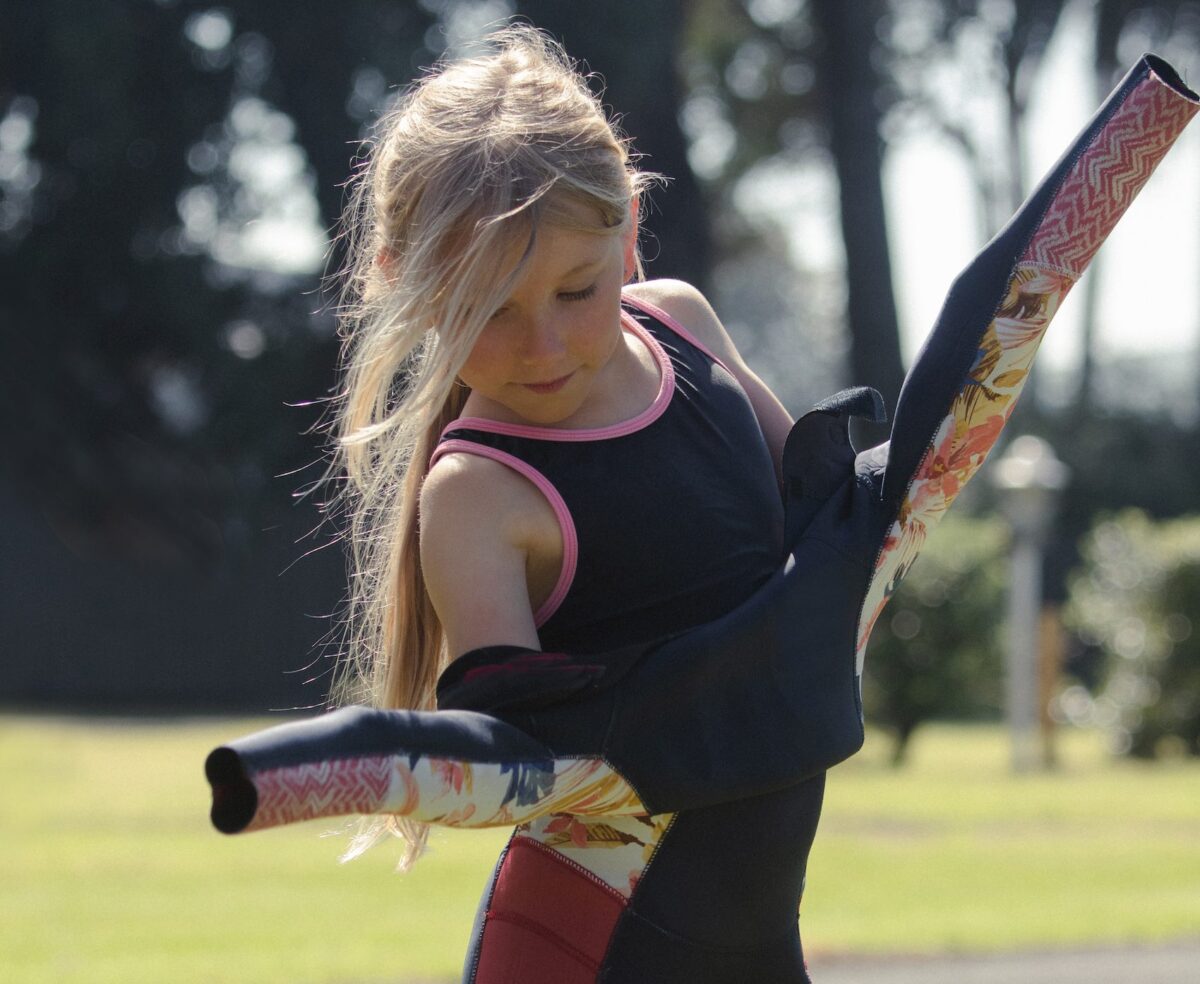
Being a grom is about more than simply being young and eager to surf. It’s about embodying a certain spirit of curiosity, excitement, and boundless enthusiasm for riding the waves. Groms are often known for their fearlessness and adaptability, making them quick learners on the surfing front.
Their journey usually begins with learning the basics of surfing—how to paddle, pop-up, and maintain balance. As they progress, they learn to read the ocean’s moods, master different surfing techniques, and perhaps even start participating in local surf competitions.
Along the way, they also develop a deep connection with the ocean, understanding its power and respecting its boundaries. Importantly, being a grom isn’t solely about surfing; it’s also about being a part of a vibrant, supportive, and passionate community that values respect for others and the environment. Being a grom, in essence, is an immersive life experience that encompasses physical activity, personal growth, and community camaraderie.
Getting Started
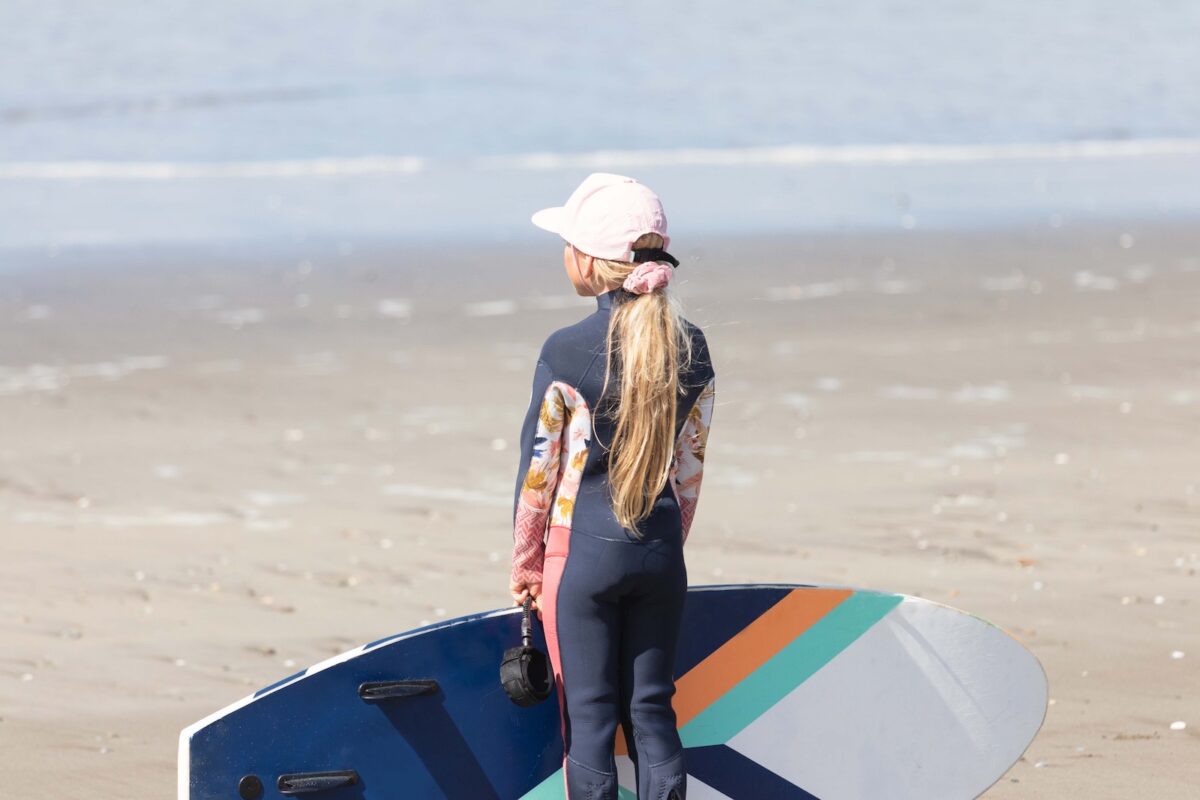
Cultivating a love for surfing in children is not about pressuring them to ride the biggest wave; it’s about fostering an environment that emphasizes fun, safety, and a deep-seated appreciation for the ocean. Teaching a kid to surf requires persistence. Start by introducing them to the sea and its many moods. Let them frolic in the waves, build sandcastles, and feel the sand between their toes. Once they are comfortable in the ocean environment, you could introduce them to a soft-top surfboard and teach them to balance on it, initially maybe on the sand.
Consider enrolling them in a surfing school for kids, where professional instructors can guide them through the basics in a safe, fun, and engaging manner. Always remember to celebrate their small victories —the first time they stand up on the board, their first ride on a wave, and every wipeout they recover from— to foster a sense of accomplishment.
Encourage them to observe other surfers and learn from them, including understanding the unwritten rules of surfing etiquette. Above all, let them see your love for surfing. Your passion, respect for the ocean, and the joy you derive from surfing could be the greatest inspiration for your children to embrace the surf.
It’s not always easy. They will get smashed and they’ll be cold. They’ll ask if they can do something else, until the surf bug bites and they’re pestering you for a lift to the beach.
A technique for encouraging a kid to surf
So it is Saturday afternoon and your fledgling grommet is not enthusiastic about going surfing. Simply offer two options:
- Going for a run up the local hill (or something similar that you know they don’t like)
- Going for a quick surf together
When you go surfing, give them your full attention. My daughter loves how present and engaged we are when we take her to the beach. We find techniques such as holding her hands while she stands on the soft top and then slinging her onto a wave. Get the bug biting before you expect them to master complex challenges like paddling out and paddling onto waves. Teach your kid near other kids of the same age so they understand that they’re on a journey and sometimes they’re better and sometimes worse than others.
Be super enthusiastic about it but never ever pressure them. We made a goal list — every ten surfs she got a reward. Make it fun. Too much pressure can sour the experience and put them off.
Leave books like Hubi’s Surf Atlas lying around for times when surfing isn’t possible.
Catching the Wave of Life
Our children stand at the shoreline of their potential, their eyes on the horizon, poised to ride the wave of life. Introducing them to the world of surfing could do much more than keeping them physically active or busy. It offers a dynamic playground for their holistic development— physically, mentally, and emotionally.
Surfing is not just a sport—it’s a training ground for life. The power of the ocean, the unity of body and mind, the mastery of a complex skill, and the therapeutic embrace of the sea— all these aspects weave together, making surfing a compelling pursuit for the young minds and bodies ready to ride their life’s wave. As the legendary surfer Laird Hamilton once said, “Surfing is about where your mind is.”
So, why not let our children’s minds—and hearts— ride the transformative wave of surfing?

